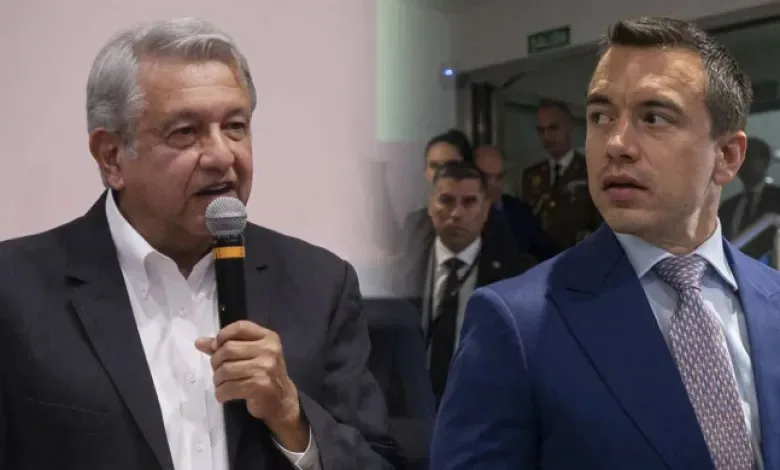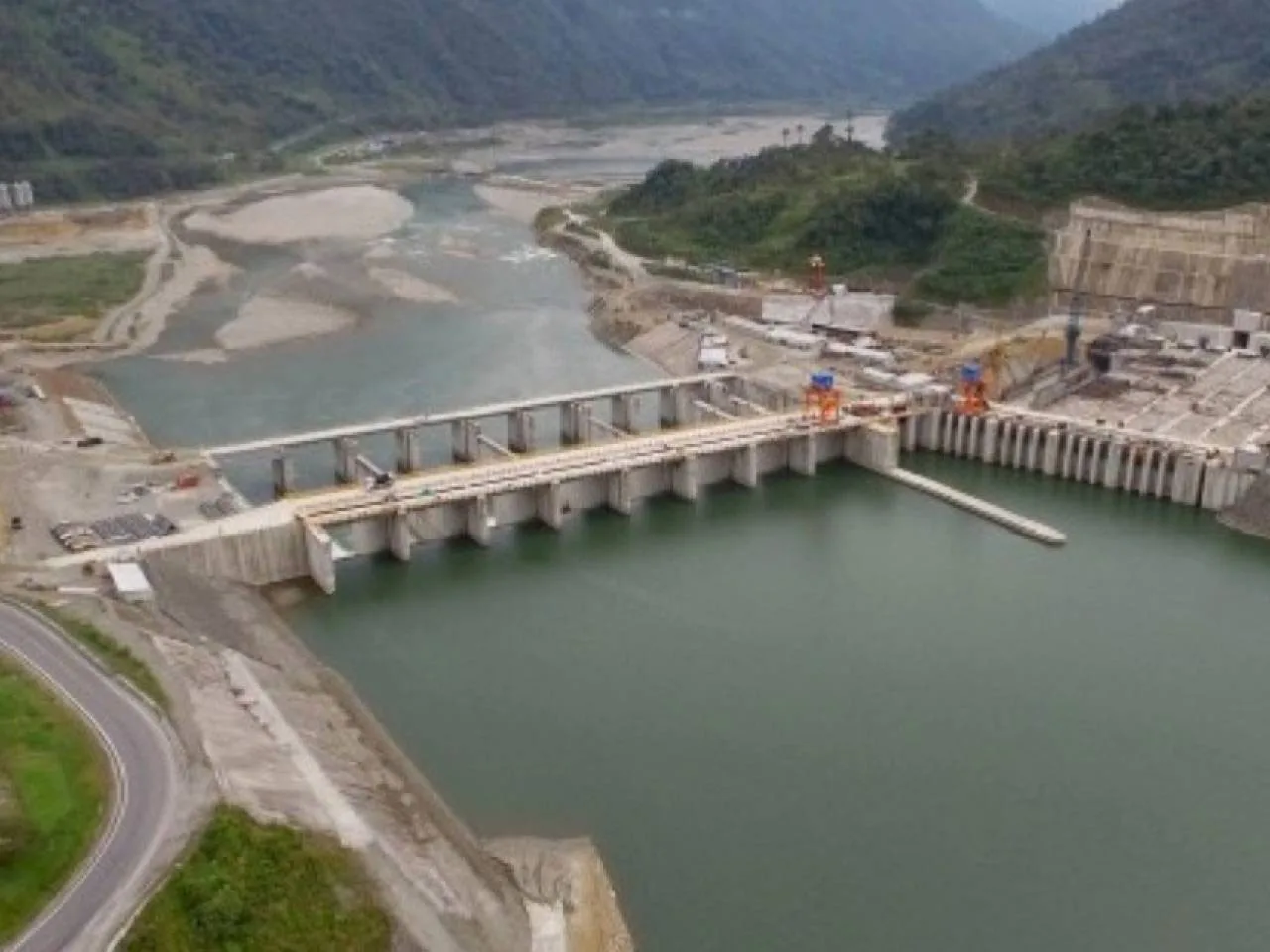Cuenca Symphony Orchestra celebrates its 50th anniversary with a series of concerts

The Cuenca Symphony Orchestra celebrated 50 years on November 3rd.
By Stephen Vargha
Almost everyone knows that Cuenca celebrated the 202nd anniversary of its independence from Spain two weeks ago. November 3rd is also notable for another anniversary: the establishment of the Cuenca Symphony Orchestra.
The orchestra was small in its first concert performances. “There were less than 15 musicians in those days. It was not a complete orchestra,” said Pablo Arízaga, who plays the flute and piccolo, and is the most senior member of the half-century-old symphony.

Flutist Pablo Arízaga rehearsing at Teatro Pumapungo.
“We were so small that we had one flute, one oboe, and one small tuba. Sometimes we were playing two instruments for a performance,” Arízaga said. “When I started with the orchestra in 1985, José Castellví Queralt was the maestro,” he says, adding that Queralt, a Spaniard, was the symphony’s first conductor.
Since its beginning, the symphony has grown and currently has 50 members, with the youngest being between 20 and 30 years old. “I am working with the national government to expand the symphony to 76 members,” said current conductor Maestro Augusto Carrión. Cuenca’s orchestra is one of three in Ecuador financed by the national government.
Carrión is confident to making this a certainty. Last year, he told CuencaHighLife, “I am taking on projects that were pending to make the institution (symphony) grow and put itself where it deserves.” He added at the time that he would manage the finances “to make this a reality.”
“It is important to have different generations in our orchestra, said Arízaga. “We are getting stronger with the older musicians playing alongside the younger ones.”

Maestro Augusto Carrión is completely involved with the symphony, including playing once in a while.
“The experience of the older musicians can be shared with the younger musicians,” said Carrión. “Our youngest musician is 20 years old and is going to a local university, majoring in music.”
“Without the older musicians, the symphony would be like a horse race,” said Arízaga. The young musicians would be going very fast, too fast.”
Arízaga started playing the flute when he was nine years old. Like many children, he started with the recorder before progressing to a professional musical instrument. “I did recitals with pianista Marcelo Ortiz,” said Arízaga. “We did many recitals at the coast and throughout Ecuador.”
Upon graduating high school, Arízaga attended José María Rodríguez Conservatory. The school and the University of Azuay were involved with last Friday’s 50th anniversary concert. Maestro Carrión chose the 1812 Overture by Pyotr Ilyich Tchaikovsky and Beethoven’s Symphony No. 9 in D minor, Op. 125.

Musicians of the Cuenca Symphony Orchestra reviewing their music for an upcoming performance.
The choral symphony was the final complete symphony by Ludwig van Beethoven. José María Rodríguez Conservatory chorus sang for what is considered the first example of a major composer using voices in a symphony.
The music has evolved since Arízaga joined the symphony. “The music has changed. We were very limited in what we could play due to our size,” said Arízaga. “We now have guest musicians and directors. It makes us better to have more knowledge of music.
“Music has transcended the time of Cuenca. The idea of the music today is different than when it started 50 years ago,” said Carrión. “It is very important for the orchestra that the music has changed through the time.”
Carrión added that the technical levels of the musicians have greatly improved due to the more challenging and complex music they play. “We are involving more people, more music into our performances,” said Carrión. “Recently, I have played with the orchestra.”

Musicians laugh it up with Maestro Augusto Carrión during a break at their rehearsal.
The increasing number of people at the performances shows the Cuenca Symphony orchestra is gaining in popularity. “More and more people have told me that they are enjoying our music,” said Carrión. “One reason is that we are presenting more types of music, including popular, jazz, and experimental.”
This coming Friday, Argentinian tango music will be performed. Tango is a style of music that originated in Argentina and Uruguay, influenced by both regional folk music and European classical dance music.
Maestro Carrión likes having the symphony being compared to the Boston Pops Orchestra, which was formed in 1881 as an offshoot of the Boston Symphony to present “lighter music,” including current hits and show tunes.
“The Boston Pops inspired my music,” said Carrión. “We only have one orchestra, but we can make music for all.”

A cellist practices before the rehearsal.
“The evolution of the symphony is fantastic,” said Arízaga. “We have great changes right now with the music and its musicians. We are always growing.”
“We want to fuse other genres into our music,” said Carrión. “We want our musicians to think about music beyond classical.”
“Our culture is different than classical music which is from Europe and Asia,” said Arízaga. “We have good music, too. There are very good composers in Latin America.”
“It’s very important for Cuenca that we are the Arts Capital of Ecuador,” said Carrión. “Cuencanos say the orchestra is now more diversified with its music. They are very happy about this.”
“The culture of Cuenca is rich making us a better symphony,” added Arízaga.
Because of the Internet, the symphony orchestra has become an internationally recognized music group. “We show our music online, giving us worldwide exposure” said Carrión. “We have fans in Australia, Austria, China, Japan, Russia, Mexico, Argentina, and Spain.”

Maestro Augusto Carrión leading the Cuenca Symphony Orchestra at a rehearsal at Teatro Pumapungo.
This is one reason why Carrión wants the symphony orchestra to tour in Ecuador and internationally. He is looking at the Festival Internacional Cervantino, a festival which takes place each fall in the Mexican city of Guanajuato. For nearly three weeks, Guanajuato has more than 2,000 artists from more than 30 countries. The varied disciplines of art are all represented: music, opera, theater, dance, plastic arts, literature, and audiovisual media.
Carrión wants to beyond the Mexican arts festival. “After Mexico, maybe we can get into the United States,” Carrión said.
The Cuenca Symphony Orchestra should remain a bedrock in the community. “Our musicians are permanent public employees,” said Carrión. “There is more stability than a typical international orchestra.”
Because of that, most performances are free to the public. It is quite the bargain as the average ticket price to a symphony performance in the United States is somewhere near $175. Seats for the Cuenca Symphony Orchestra are first come-first served.
_________________
Upcoming concerts
(These programs are subject to change for reasons beyond the symphony’s control)
Friday, November 18, 2022, 8 p.m.
Teatro Pumapungo, Calle Larga y Huayna-Capac; Symphonic Tango and Bolero; Yuri Sobolev, guest conductor; Stella Milano and Rubén Amarillo, guest soloists; Tickets: $20;
Digital tickets: Click here; Physical Tickets: Ticketshow Bowling Hall and and Doña Menestra, at the Mall del Rio; and El Surtida, Presidente Borrero 8-68 and Simon Bolívar.
Friday, November 25, 2022, 8 p.m.
Teatro Casa de la Cultura, Calle Luis Cordero; Tribute To the Cuenca Rotary Club on Its 88th Anniversary: “Light and Shadow”; Augusto Carrión Rodas, conductor; Tiina Stürzinger, Christian Torres Pedro Ortiz, guest soloists
Friday, December 2, 2022. 8 p.m.
Teatro Pumapungo, Calle Larga y Huayna-Capac; Program to be announced
Cuenca Symphony Orchestra, Calle Larga S/N y Avenida Huayna Cápac, Cuenca, 7-410-9186, 7-282-1742
Photos by Stephen Vargha
Stephen Vargha’s new book about Cuenca, “Una Nueva Vida – A New Life” is available at Amazon in digital and paperback formats.
















